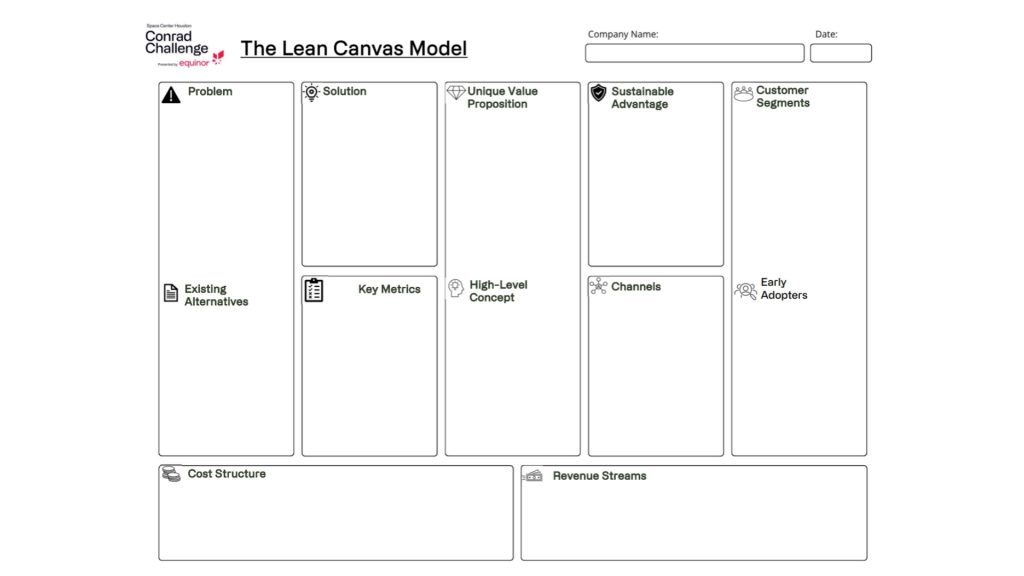Are you ready to compete in the Conrad Challenge? The Challenge’s first phase, the Activation Stage, requires the submission of a Lean Canvas. But what is a Lean Canvas, exactly? We break it down for you in this helpful resource.
Lean Canvas Overview
Lean Canvas is a one-page business model tool. It helps you break an idea into its most important assumptions—customers, problems, solution, and how the venture could work—so you can discuss, test, and improve the idea quickly.
Below is an example of a Lean Canvas.

What’s the purpose?
- Clarity: Turn scattered thoughts into a simple snapshot your teammates, mentors and judges can understand at a glance.
- Speed: Capture an initial version in minutes, then refine as you learn.
- Focus: Keep attention on the riskiest assumptions first instead of writing a long plan that might change.
How it’s used in practice today
Teams use a Lean Canvas at the very start of a project to align around a shared picture of the business. Product, design, marketing and engineering can co-edit it, attach notes or research, and update it as interviews and prototypes reveal new insights. In short:
- Draft a first canvas to capture your best current thinking.
- Collect evidence (interviews, quick experiments, early prototypes).
- Update the canvas, focusing on what you’ve learned and what changes are next.
- Repeat as your understanding of the problem, solution, and go-to-market solidifies.
A cursory tour of a Lean Canvas’s 12 components
Keep your first pass brief—one or two lines per box is enough to start.
- Problem — The top 1–3 pains your customer has. Include what they do today to cope (“Existing Alternatives”).
- Existing Alternatives – How is the problem addressed by other companies and innovations?
- Customer Segments — The specific groups you aim to serve when the venture scales. Identify a clear early adopter subset you can reach first.
- Early Adopters – Within your target customer segment, who are the very first customers you will target? For example, you may target specific geography or a social group you have a preexisting connection to.
- Unique Value Proposition (UVP) -The short promise that explains why your solution stands out and is worth choosing. (“High Level Concept” = your innovation’s tagline.”
- High Level Concept – What is your innovation tag line? This should be as concise as possible.
- Solution — The simplest approach (often an MVP) that addresses each of the top problems.
- Channels — How customers will discover, evaluate, and obtain your offering (marketing, sales, distribution). Prioritize only a few to start.
- Revenue Streams — How money comes in. Early pricing and sales assumptions belong here.
- Cost Structure — The major costs to build, launch, and operate.
- Key Metrics — The few numbers that best indicate real progress (leading indicators over vanity stats).
- Sustainable Advantage — What competitors can’t easily copy or buy (e.g., proprietary know-how, access, community). It’s fine if this evolves later.
How to use this with the Conrad Challenge Webinar
- Watch the Lean Canvas Webinar to see become more familiar with the Lean Canvas Model.
- Draft individually (10–20 minutes) so each teammate brings independent thinking.
- Compare and combine into one team canvas—keep the clearest, most testable statements.
- Plan two quick tests (e.g., five customer interviews, a landing page, a concierge trial).
- Revise the canvas based on what you learn and carry those updates into your Innovation and Power Pitch work.
Quick start checklist
- We named a specific early adopter.
- We wrote a crisp High Level Concept (one sentence, no buzzwords).
- Our solution maps directly to the listed problems.
- We chose 2–3 channels to start, not a laundry list.
- We picked one or two key metrics we can measure this month.
- We identified the riskiest assumption and designed a way to test it.
Remember: your Lean Canvas is a snapshot, not a contract. Aim for clear, testable statements today and expect them to improve as your evidence grows.



